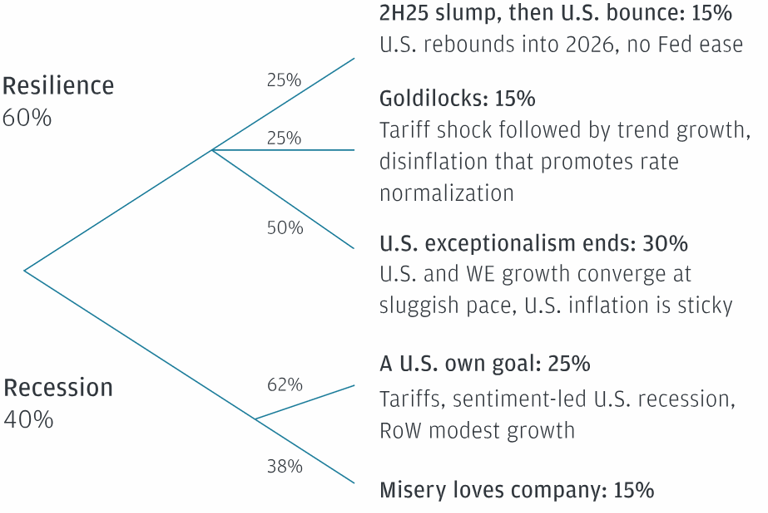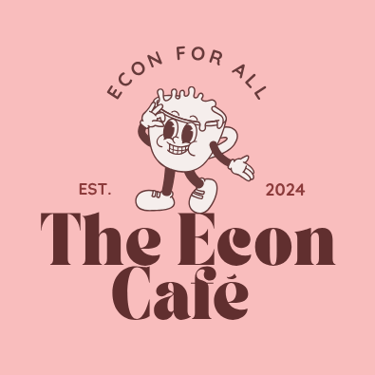What Is a Recession - are we heading towards one?
BLOG
Recession. A word that has been coming up on the news quite frequently these days. But how close are we to one? And most of all, what is a recession?


Recession. A word that has been thrown around quite frequently recently, especially in the news, with the introduction of tariffs, changing government regulations, population growth and rising prices. But what exactly is it?
Well, according to my school textbook, “A recession is two consecutive quarters of negative economic growth”. But that doesn’t explain very much, does it?
The phrase ‘Two consecutive quarters’ refers to how economists split the year into four parts, or quarters, each lasting three months. As the market condition is constantly changing, with trends of rapid growth or contraction, quarterly data enables easier identification of trends and potential economic shifts, allowing quicker responses to these changes. It also takes a better account of seasonal factors that may affect economic indicators; providing an accurate image of the underlying economic performance. Such as a country’s economy that relies on its ability to export agricultural goods suffers during winter seasons.
‘Negative economic growth’ in this case refers to short-term economic growth- which is measured in GDP. Short-term economic growth means the actual and quantifiable measurement of the economic growth of an economy, measured by the total value of goods and services produced within that economy– otherwise known as ‘The Gross Domestic Product’. So, negative economic growth means a negative GDP.
A recession brings many problems to an economy. With lower overall output (goods and services being provided), the demand for labour to help provide them decreases too, leading to increasing unemployment. With fewer people having a stable income, people spend less, further reducing the aggregate demand of the economy. Aggregate demand is the total demand in the economy. It consists of four components: consumption, government expenditure, investment and exports minus imports. Businesses may cut jobs or stop hiring entirely- significantly dropping consumer confidence. It’s a domino effect, with each slowdown causing another. For the average person, this means higher food bills, worrying about paying rent, and facing rising layoffs.
Recent headlines predict that we may be on the verge of a recession, but how feasible is that claim?
According to J.P. Morgan, recent forecasts suggest a 40% chance of a US recession, with a 38% chance of a global recession if that happens.
A 60% chance of resilience means that the US avoids a full recession, avoiding a major downturn, but still has multiple outcomes.
Source: JP Morgan Economics
A 2H25 slump = A slump (slowdown or mild recession) in the second half of 2025.
However, after that slump, the U.S. economy recovers (bounces back) in 2026 without the Federal Reserve having to cut interest rates to stimulate the economy.
Goldilocks, 15% and ‘just right’
There is a 15% chance that the US faces an economic shock from tariffs, but recovers steadily, with inflation rates reducing and interest rates returning to normal levels.
U.S. exceptionalism ends = there's a 30% chance that the U.S. will no longer outperform Western Europe and other developed economies, leading to slow growth and high inflation.
A U.S. own goal- self-imposed tariffs hurt the U.S. businesses and consumers, with negative consumer sentiment within the U.S spiraling into a recession.
“Rest of World” (RoW) still grows a little, but the U.S. slows down sharply, because of its own policy missteps.
A global recession
So are we heading for a recession? While no one can predict the future with absolute certainty, and economists can be wrong, current forecasts suggest there's a significant risk- but not a guarantee. The U.S. economy still has a good chance of avoiding a full recession, though challenges like tariffs, inflation, and global uncertainty remain. What’s clear is that staying informed helps us better understand how these big-picture events affect our everyday lives, from prices at the grocery store to job security and interest rates. In uncertain times, knowledge is power.
